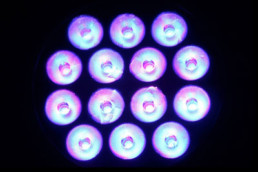Could LEDs Cure Alzheimer’s?
Imagine slowly losing your memory. Alzheimer’s disease causes just that. It’s a neurodegenerative illness involving memory loss. Other symptoms include a lack of self-care, disorientation and issues with behavior. It can also cause certain types of dementia. Previously, scientists have experimented with drugs to see if they could stop or slow the onset of the disease, but these for the most part proved to be ineffective. Now, however, a team at the Massachusetts Institute of Technology has made an important breakthrough that could signal a way to help prevent Alzheimer’s.
They discovered that shining flickering LED lights into the eyes of lab rats can lower the plaque levels in their brains. The treatment works by flashing LED lights at the rats at a rate of 40 cycles per second. This, in turn, stimulates special protective cells in the brain to eliminate damaging proteins that, when accumulated in large groups, create plaque buildups. Plaque build-up in a person’s brain is a major cause of Alzheimer’s disease. If this treatment proves to be effective in humans, it could have substantial medical benefits.
The research team plans to soon begin testing flickering LED lights on human subjects. They are currently collaborating on how best to conduct the experiment and plan to begin once they determine an appropriate course of action. If successful, this could revolutionize treatments for Alzheimer’s disease, dementia and other side effects of plaque buildup in the brain.
Scientists and experimenters can ensure that their LED flicker rates are operating correctly with Konica Minolta Sensing. We offer a special customized T-10A illuminance meter to measure flicker rates. Any researchers testing LED lights for medical benefits won’t have a complete lab without Konica Minolta Sensing instruments.










